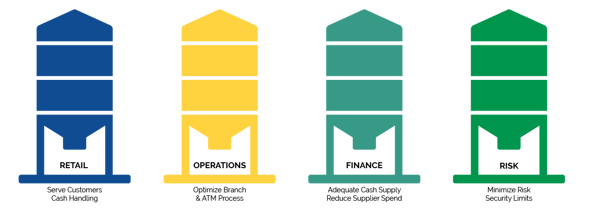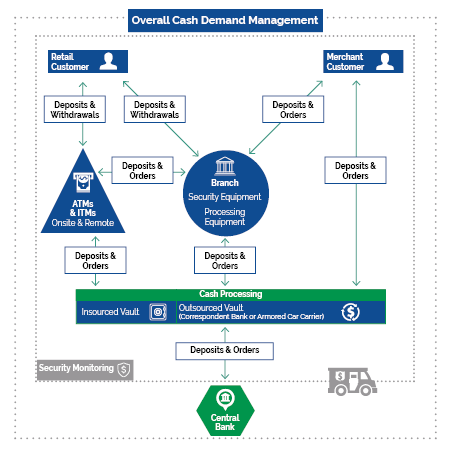As discussed in the previous blog, one of the main concerns that is particularly relevant during the COVID-19 pandemic for financial institutions is employees being unable to work due to illness, or branches being forced to temporarily shut their doors. These two problems lead to various challenges that banks and credit unions need to prepare for:
- How will I order cash for my entire branch and ATM/ITM network if the designated people that order are unable to?
- How will I make sure my lobby ATMs/ITMs are filled if the branch is closed?
- How do I ensure my cash supply chain is still running efficiently?
- How do I communicate with my critical suppliers such as my money supplier and armored car carrier?
Let’s recap a little bit from the last blog about how banks and credit unions are ordering cash. Financial institutions order cash through either a centralized or decentralized ordering process. A centralized ordering process means that one person orders cash for the entire branch and ATM/ITM network and communicates with the money supplier. Or they order through decentralized ordering process which means that each individual branch orders their own cash and communicates with the money supplier. As you have probably determined, or potentially even experienced during the COVID-19 pandemic already, you can see some issues that will arise if your bank or credit union orders cash through a decentralized process during this time.
The challenge with being decentralized during the pandemic is that the financial institution may not be ready to handle a centralized process in the case that some branches close their doors or critical employees are unable to work. The cash supply chain is often an overlooked or underappreciated area of the financial institution. However, the cash supply chain affects a diverse group of stakeholders including Operations, Risk, Treasury and Retail. Many of these groups work in their own silos, but play a critical role in the cash supply chain as you can see in the image below.


It is imperative for financial institutions to keep the cash supply chain moving efficiently during times of crisis, so what can you do to ensure you have a proper plan in place to avoid any cash supply chain disruptions?
First and foremost, make sure you reference the newly updated pandemic planning guidelines released by the FDIC and NCUA. Once you have done your research and fully understand the new guidelines as it relates to supply chain management, develop a plan to address the guidelines appropriately as they relate to cash. Second, make sure you have a plan in place that allows you to order cash for all your branches, ATMs, ITMs and vaults through a centralized process. Logicpath recommends finding a software, such as C3 Financial, that can communicate directly with many money suppliers and armored car carries, as well as allow for central and remote ordering in the event that need arises.
If you are looking for additional guidance on the new pandemic planning guidelines set forth by FDIC and NCUA check out our on-demand webinar, “Crisis Management and Cash: COVID-19 and Future Pandemic Planning.”


